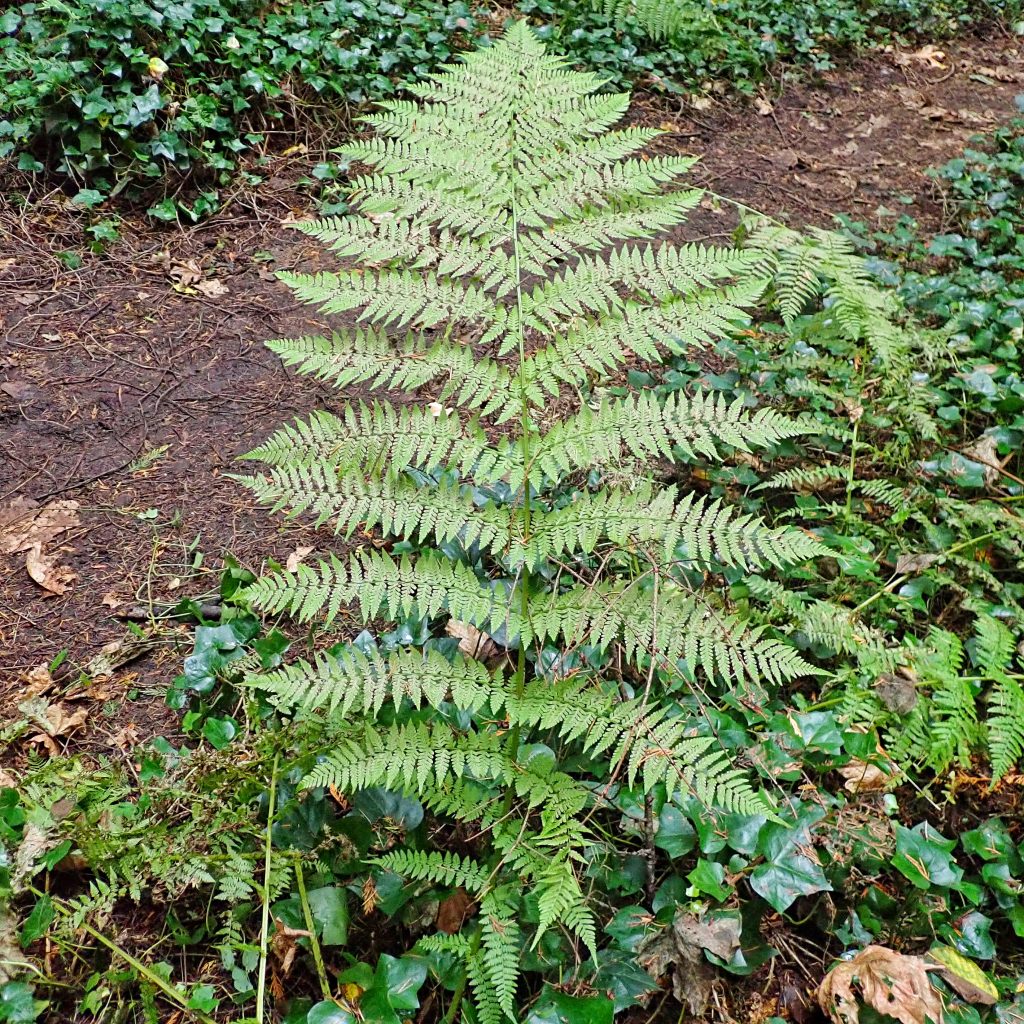
Over the next few days I’ll be doing comparison profiles for 3 large, pinnate ferns that are commonly found in the forests and woodlands on the wet side of the Cascades. For years I had a difficult time remembering which was which, so one day I just went fern hunting with a couple field guides and got them straight in my head. I meant to do these comparison profiles last winter, but got caught up in other things, and didn’t think of it again until finding these pics during the recent attempt to organize my photos reminded me.
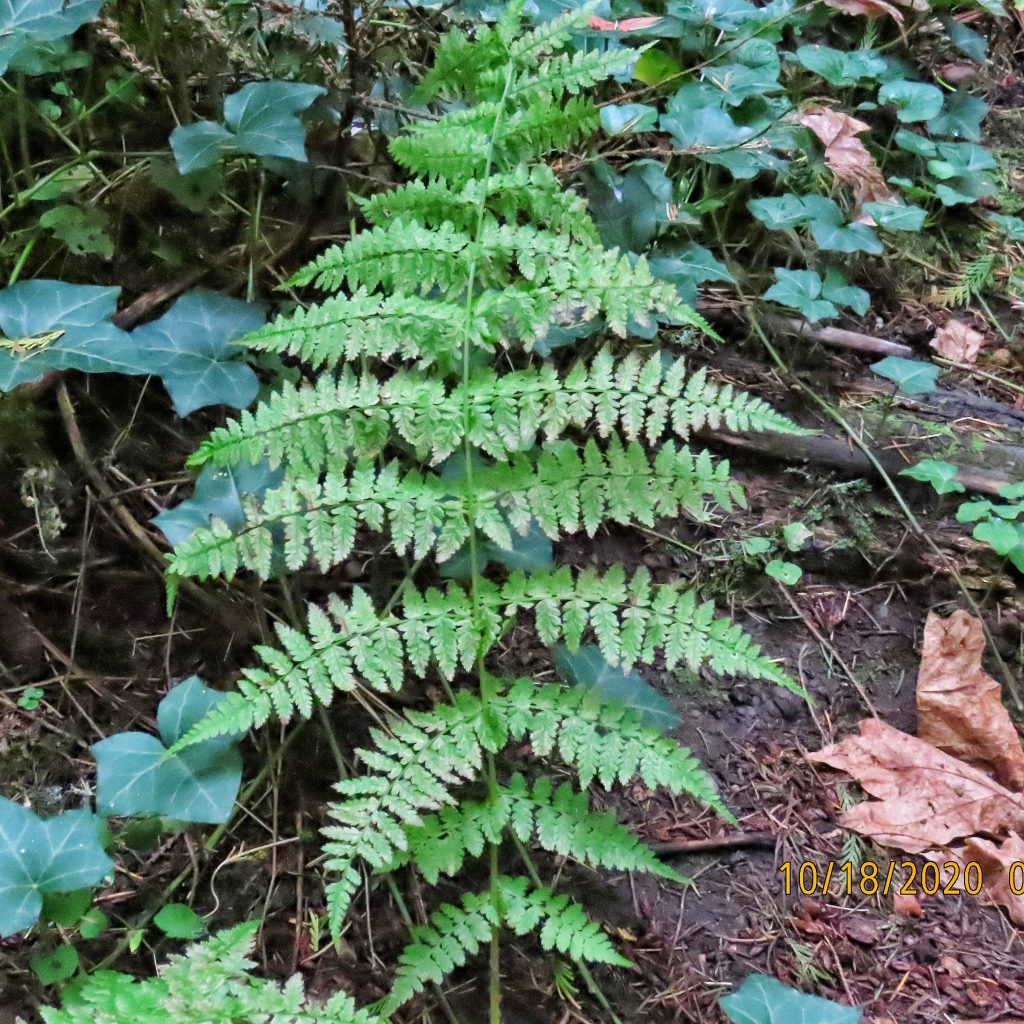
For me Athyrium filix-femina is the easiest to remember. Lady Ferns are large and fairly robust, and the blades (part of the frond above the bare stem) are diamond shaped, with the longest pinnae (which would correspond to the leaf of a compound leaved plant; a nice illustration of fern terminology can be found here) in the middle of the blade, and shorter ones toward the base and the tip, and usually less than 10% of the stalk is exposed at the base. They are also usually twice pinnate, although I’ve seen some that were thrice pinnate. Their pinnules (leaflets) are irregularly and jaggedly toothed. Another large fern with jaggedly toothed pinnules is Dryopteris expansa, but it is thrice pinnate, has blades that are triangular in shape with a long, exposed stalk, and on the lowest pinnae the top pinnules nearest the stalk are much shorter than the pinnules below. Bracken Ferns are also usually thrice pinnate, with a long exposed stalk, but they have pinnules that are either smooth or minutely toothed on the margins.
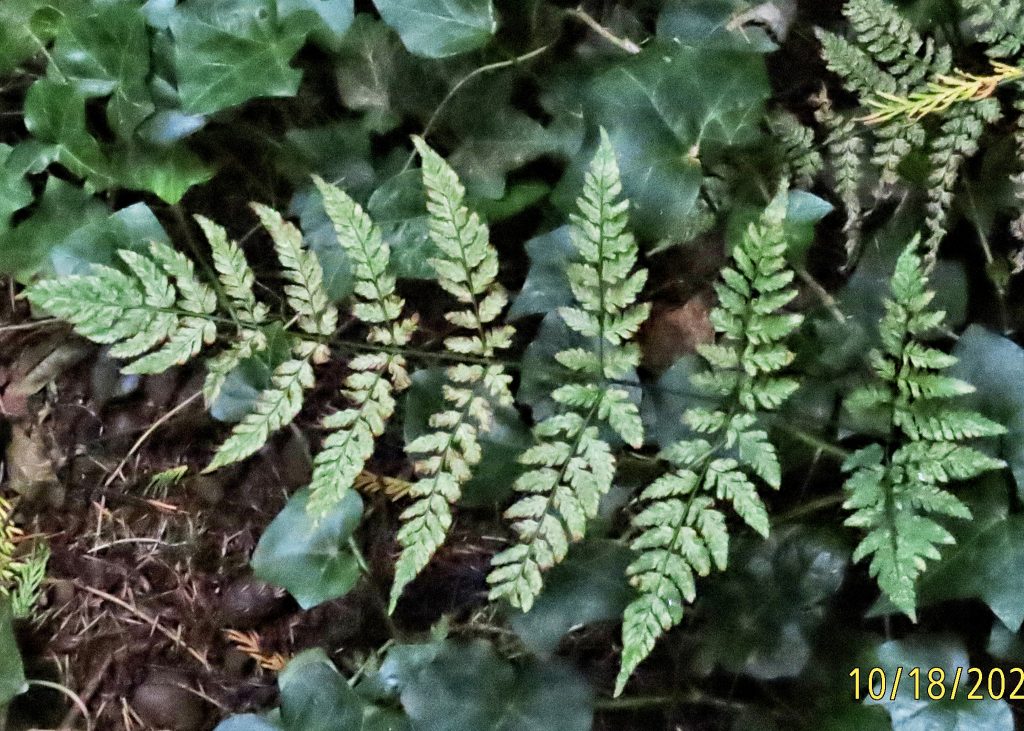
The fiddleheads of Lady Ferns haven’t been used for food nearly as much as other fiddleheads, and they do contain thiaminase, which depletes B complex vitamins in the body, although that enzyme is destroyed by cooking or thorough drying. The rhizomes (roots) of this fern were the part most commonly used for food. They are high in starch and indigenous peoples often boiled and peeled them as a vegetable, or roasted and ground them for flour.
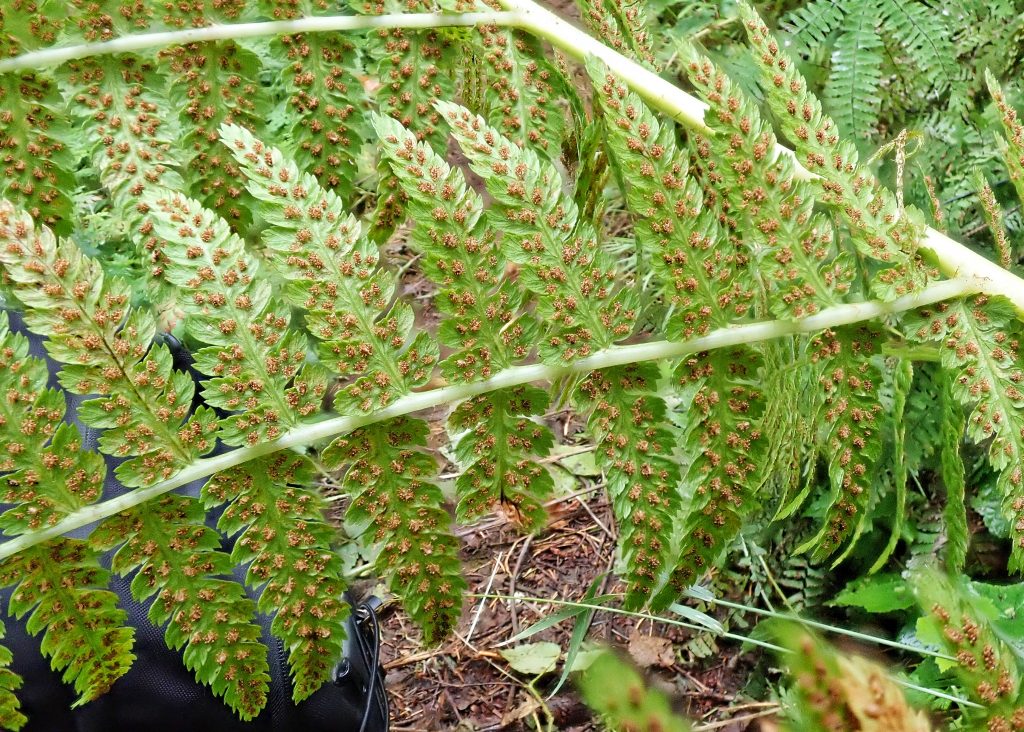
Lady Ferns also had many other uses. Various preparations of the roots were used medicinally to treat urinary retention and venereal disease, to improve milk flow in nursing mothers, and to wash sore eyes. The stems were powdered and used for body and labor pain, a decoction of the whole plant was used to treat the vomiting of blood, and the fiddleheads were thought to be useful in treating some cancers. They also used the fronds to cover baskets of berries, to separate layers of foods (often camas bulbs) that were being steamed, and for wiping down fish after cleaning.
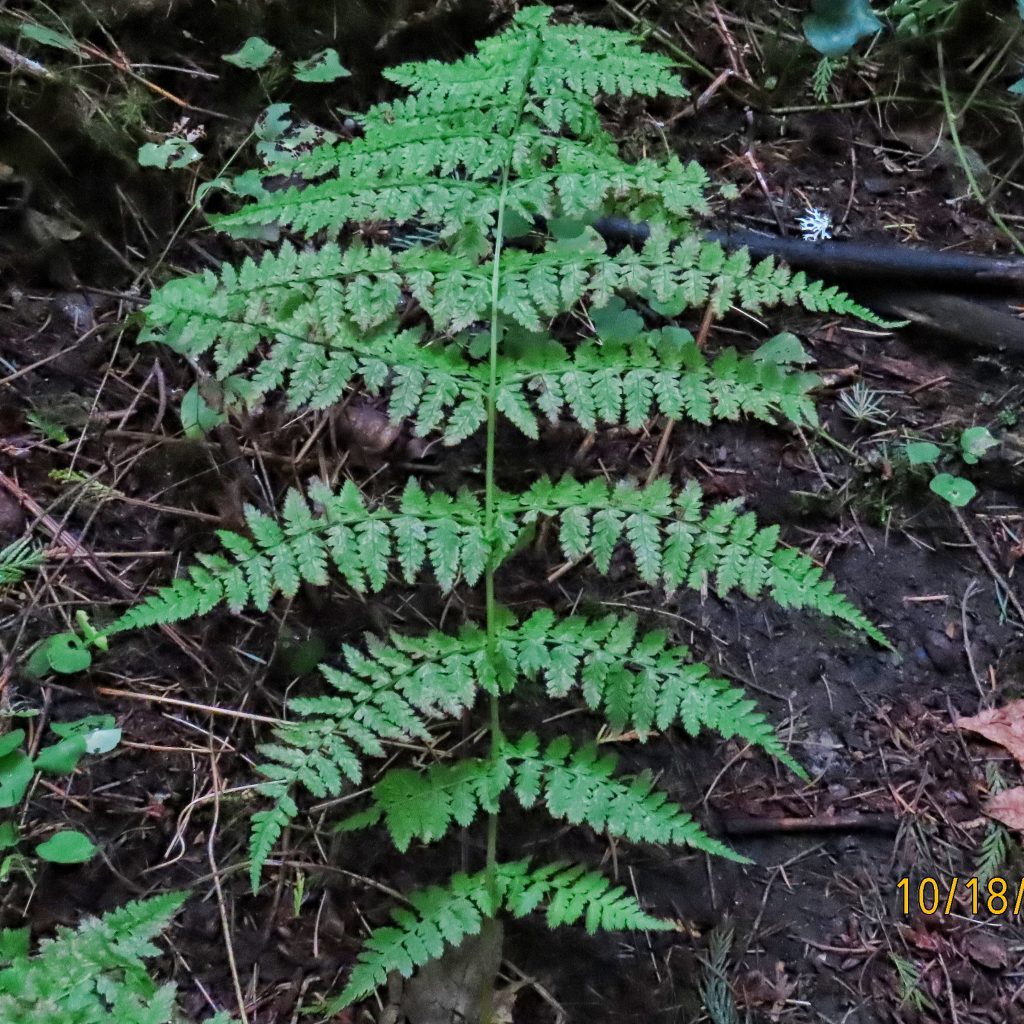
Description-Large (fronds up to 6’ long), pale green fern with multiple fronds rising from the base; blade is diamond shaped ; 2-3 times pinnate; sori (spore producing cells) are horseshoe to crescent shaped; indusium (sori covers) are never formed by a revolute margin.
Similar species-see above- Athrium filix-femina are the only one of our large forest ferns that have a diamond shaped blade.
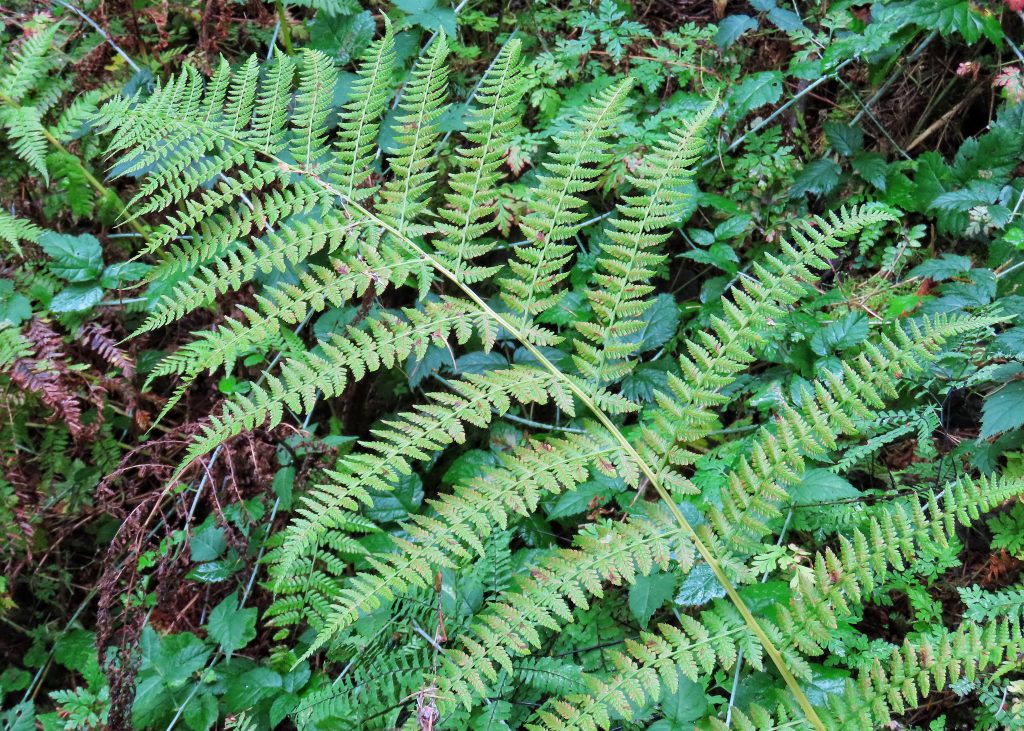
Habitat-Moist to mesic forests, forest openings, woodlands, damp meadows, stream and road banks; seems to prefer acidic soil.
Range-North and South America, Europe, and Asia; absent only from the hottest, driest parts of our region.
Reproductive timing-Spores produced from May to September
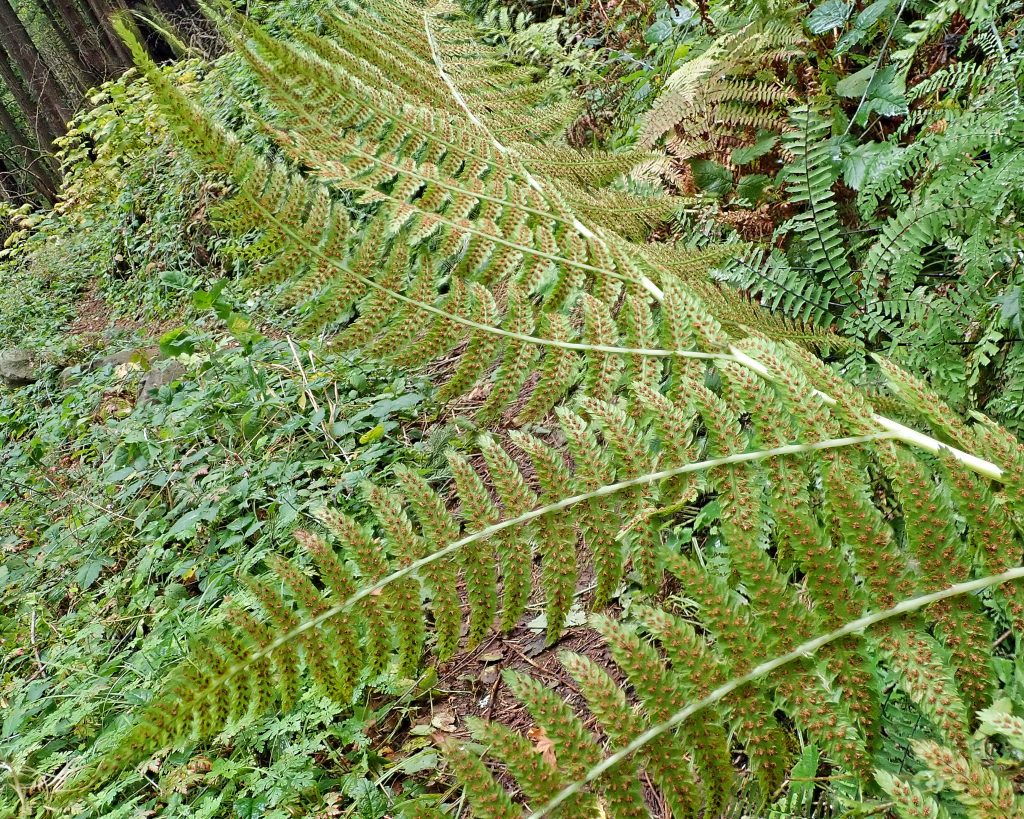
Eaten by-Deer and elk will eat this in the fall and early winter, and bears will sometimes eat the fronds; Probably mined by some flies in the genus Chirosia;
Etymology of names–Athyrium is from the Greek word for ‘doorless’, and references the fact that the sporangia are hidden by the indusium until very late in the reproductive process. This supposed modesty is also allegedly the reason why they are called lady ferns, although I had always assumed it was because they were so graceful. The specific epithet filix-femina is from the Latin words for ‘fern-feminine’, likely for the same reasons as above.
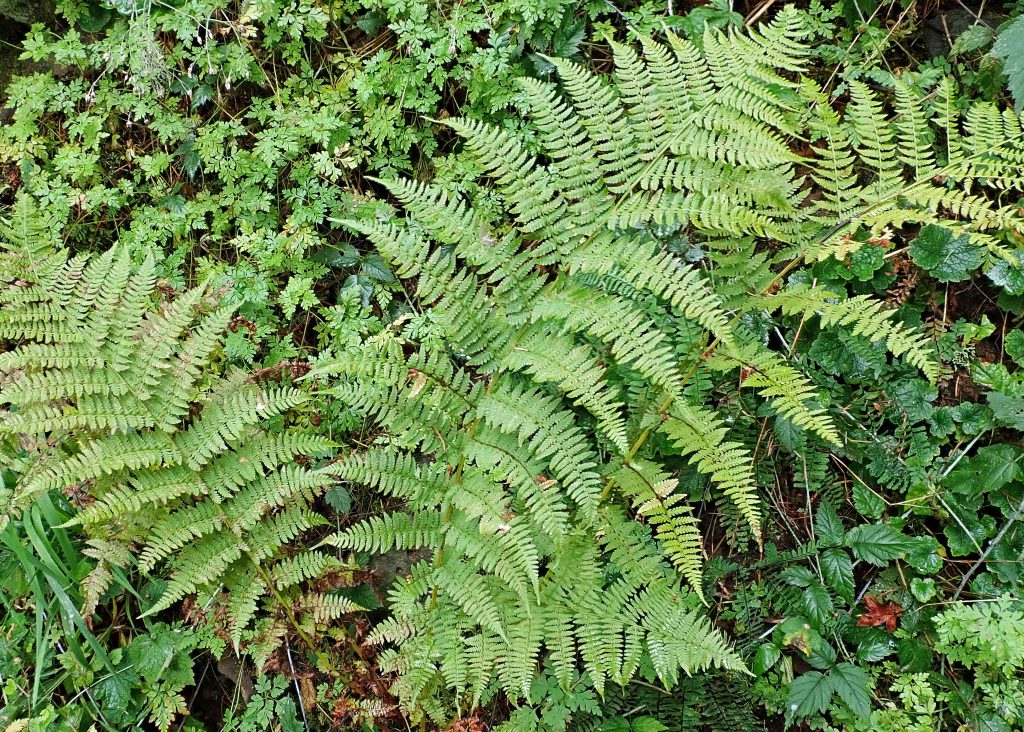
OregonFlora Athyrium filix-femina var. cyclosorum
https://pfaf.org/User/Plant.aspx?LatinName=Athyrium+filix-femina
https://www.wnps.org/native-plant-directory/55-athyrium-filix-femina
http://naeb.brit.org/uses/search/?string=Athyrium+filix-femina
http://www.efloras.org/florataxon.aspx?flora_id=1&taxon_id=200003781
http://nativeplantspnw.com/lady-fern-athyrium-filix-femina/
https://www.fs.fed.us/wildflowers/beauty/ferns/structure.shtml
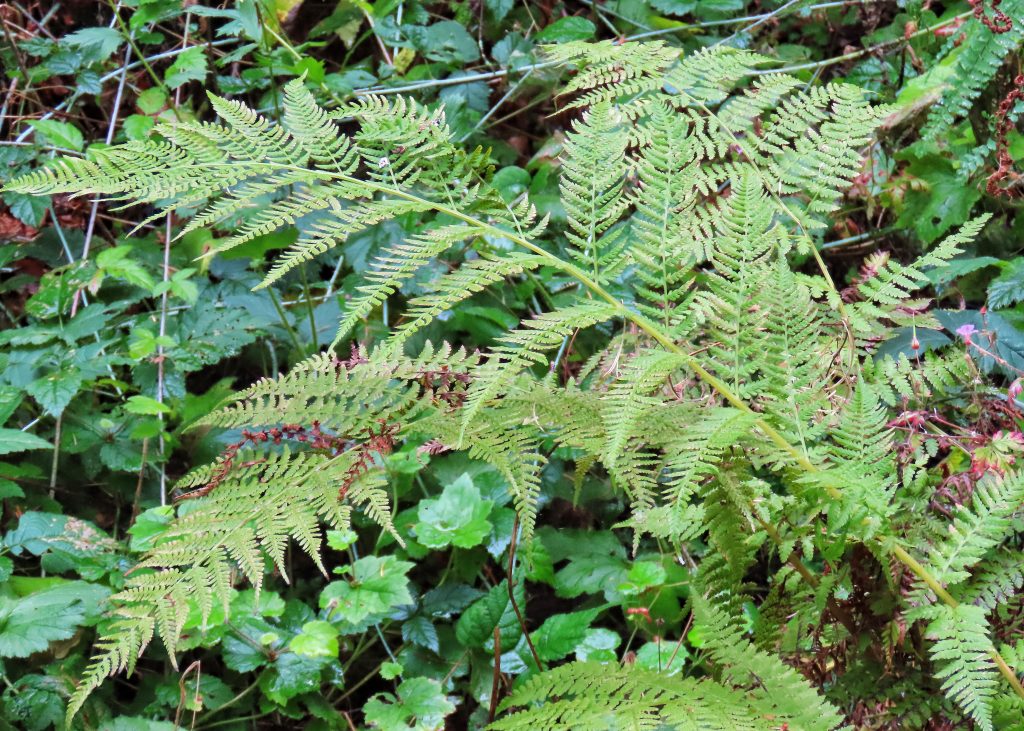
FABULOUS!
Thank you!
Lady Fern is probably the most commonly grown fern in gardens. Back in Victorian days, during the “fern craze,” hundreds of variants were selected from the wild and enthusiasts had large collections. A few of these are still available from nurseries today.